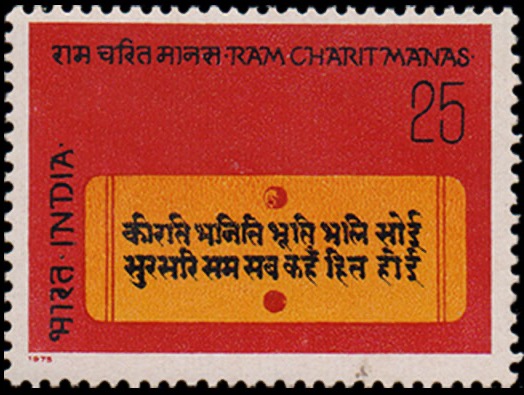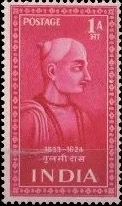
The Hanuman Chalisa is one of the most widely recited devotional hymns among the Hindus. It transcends regional and linguistic barriers enjoying widespread popularity across India and beyond. Millions recite it daily by rote, often during the early morning or evening hours, and on special occasions. But not all of them know the exact meaning of the poem. Maybe, therein lies its charm!
Here are some fun facts about the revered Hindu devotional hymn dedicated to Lord Hanuman:
The hymn
- The Hanuman Chalisa consists of 40 verses (chalis is 40 in Hindi), hence its (simple) name.
- It is written in a mix of doha (couplets) and chaupai (quatrains) meters, creating a distinctive rhythm.
- The hymn is composed in Awadhi, a dialect of Hindi, which adds to its folkloric charm.
- It was composed by the 16th-century poet Tulsidas, who.also wrote the famous Ramcharitmanas.
- The hymn expresses deep devotion to Lord Hanuman, highlighting his strength, courage and devotion to Lord Rama.
- The Chalisa is rich in poetic imagery, using metaphors and similes to describe Hanuman’s exploits.
The language
- Awadhi is an Indo-Aryan language spoken in the Awadh region of Uttar Pradesh, India, and the Terai region of Nepal.
- About 55 million people speak Awadhi, with an estimated 65 million native speakers in India and 500,000 in Nepal.
- Awadhi is a distinct language with its own grammar.
- Awadhi was a major literary language before gradually merging with Hindi in the 19th century to help develop standardised Hindi.
The style
- The Hanuman Chalisa showcases the intersection of folk and classical traditions in Indian literature and music. It is simple and unique in its style. Some illustrations are given here:
- The verses are bathed in belief:
- संकट से हनुमान छुडावै : Hanuman frees (one) from difficulties.
- तुम रक्षक काहू को डरना : (With) you as protector, why fear?
- तुम्हरे भजन रामको पावै : Devotion to you begets Rama.
- हनुमत सेइ सर्व सुख करई : Worship of Hanuman makes all kinds of happiness (happen).
- They drip with devotion and faith:
- राम लखन सीता मन बसिया : Rama, Lakshmana and Sita dwell in (your) heart.
- राम रसायन तुम्हरे पासा : You hold the essence of (devotion to) Rama.
- और मनोरथ जो कोइ लावै । सोइ अमित जीवन फल पावै : Other desires whoever brings, will receive many fruits of life.
- And sparkle in their simplicity and spontaneity:
- बुद्धिहीन तनु जानिके, सुमिरौं पवन कुमार : Knowing myself as ignorant, I meditate on you, Pavanakumar (Hanuman)
- लील्यो ताहि मधुर फल जानू : (You) swallowed It (the Sun) thinking it to be a sweet fruit.
- श्री रघुबीर हरषि उर लाये : Delighted, Raghuvir brought you to his bosom.
- आपन तेज सम्हारो आपै : You alone can control your great energy
The belief
- The hymn has become an integral part of Hindu spiritual tradition and cultural heritage.
- Reciting it is believed to offer protection from evil, misfortune and negative energies, while also seeking Lord Hanuman’s blessings for all-round success.
- The hymn is considered a powerful tool for spiritual growth, helping devotees cultivate qualities like courage, loyalty and selfless service.
The influence
- The Chalisa reflects the syncretic tradition of Hinduism, blending elements from various philosophical and cultural streams.
- Its verses have been set to music in various styles, from classical to folk and modern adaptations.
- The hymn has inspired numerous artistic illustrations, paintings, sculptures and temple carvings.
- The Chalisa has influenced devotional music and literature across cultures, including in India, Nepal, and other parts of South Asia.
The poet

- Tulsidas (1532-1623) was a renowned Indian poet, philosopher and devotee of Lord Rama, who played a significant role in popularising the Ramayana epic.
- He was born in Rajapur, a village in the Chitrakoot region of present-day Uttar Pradesh, India.
- He is believed to have been born into a Brahmin family and received a traditional education in Sanskrit and Hindu scriptures.
- Tulsidas was a proponent of Bhakti Yoga, the path of devotion (to attain self-realisation), which emphasises the importance of love, surrender and devotion to the divine.
- He is best known for composing Ramcharitmanas, a classic epic poem that retells the story of the Ramayana in Awadhi. The epic poem is considered Tulsidas’ magnum opus, and is widely read and revered.
- Another notable work of his is Vinaya Patrika, a collection of poems and prayers that showcase his devotion to Lord Rama and his commitment to spiritual growth.
- Tulsidas’ literary contributions are immense, and his works continue to be widely read and revered in India and beyond.
The link below leads to a simple rendition of the meaning of Hanuman Chalisa in English, doha by doha:
https://greenmesg.org/stotras/hanuman/hanuman_chalisa.php
Image 1: A postage stamp issued by India in 1975 to commemorate the fourth centenary of Ramcharitmanas.
Image 2: A postage stamp issued by India in 1952 in honour of Tulsidas as part of the six-stamps set on Saints and Poets of India.
